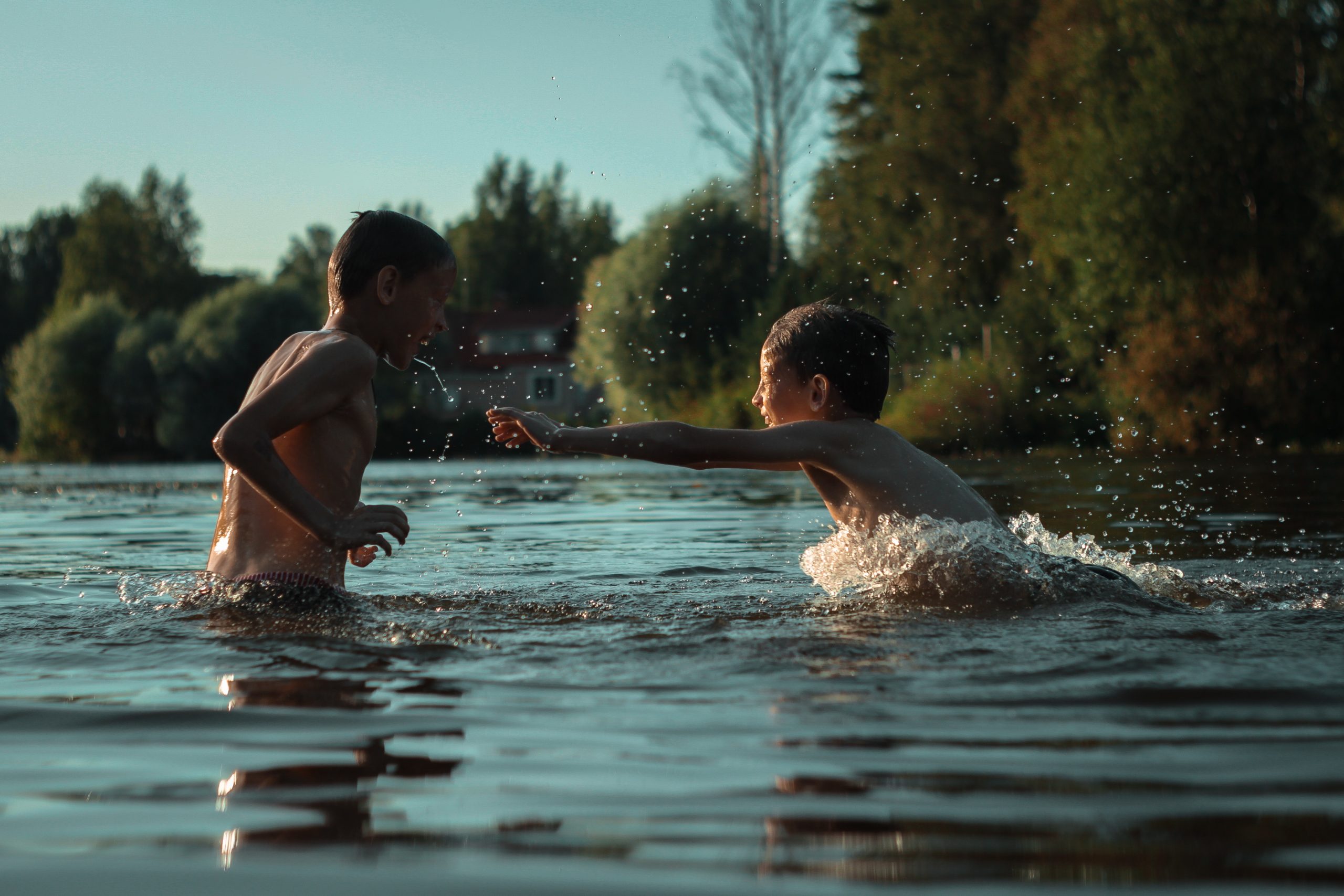-By: Melissa Pintor Carnagey, LBSW-
Genital exploration between kids, often referred to as “playing doctor,” is a common occurrence within childhood. The uncertainty caregivers can feel in knowing how to react to these instances has a lot to do with how taboo and shame-based our culture can be on topics related to bodies and sexual health. The lack of early ongoing comprehensive sex education leaves parents and caregivers without the knowledge and safe spaces to understand these topics more openly. This silence breeds misinformation and fear.
Many caregivers are also navigating parenthood with their own trauma histories and early consent violations, which can make it difficult to decipher what is “healthy” sexual behavior in childhood and how to effectively respond to situations.
Parents deserve to feel confident and competent along the journey of raising kids, so here are some key elements to keep in mind when you come across an instance where children are touching, exploring, playing with or curious about each other’s genitals:
Children being curious about their own genitals and the genitals of others are both very common aspects of sexual development. Their curiosity and desires to explore do not make them sexual predators or deviant. When we truly understand this, we are better positioned to respond from a place of responsive confidence versus fear or shame.
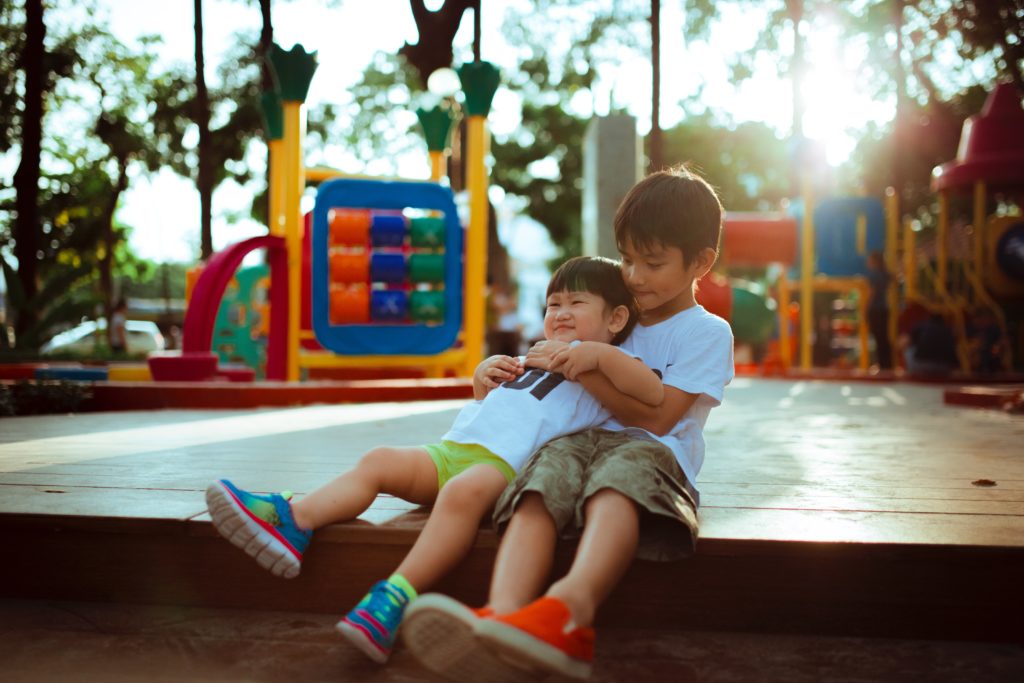
Age and cognition level matters.
General rule of thumb is if kids have an age gap of three or more years, they are no longer considered within each other’s “peer group” and the risk is high that an inequitable power dynamic is involved. This makes them more vulnerable to unsafe touch or coercion. This also can apply if one or more children have a cognitive or developmental disability impacting their capacity to advocate for their body boundaries effectively. Consent must be informed and that cannot happen if children are not able to understand what they are consenting to.
Just because children are siblings or family, does not entitle them to access to each other’s genitals.
Genital stimulation between kids is not the same as a hug or high five, for many reasons. We want to set them up to recognize safe, consensual, sexual touch in their futures. We want to protect them from sexual abuse and consent violations from others who they see as people that love and care for them. So our messaging must be consistent when it comes to talking with them about genitals, privacy and safety.
There are no “special relationships” with siblings or family members that would make the act of playing with each other’s genitals okay or safe.
When addressing instances of genital exploration between kids, use clear phrases and gentle redirection.
For example, “We don’t touch their penis/vulva/genitals. It is a sensitive area. It’s okay to be curious, but we want to be safe with each other. Let’s read a book about bodies so you can learn more.” Help them to learn under what circumstances genital touch from others during childhood is appropriate (ex. for help with hygiene care by trusted adults or during medical appointments) and how they can speak up when they are uncomfortable or feel unsafe.
When a situation has occurred between kids, a parent’s fear can lead to triggered reactions. It’s important that you take a few deep breaths if needed and see this as an opportunity for a teachable moment, not for punishment.
Create spaces that minimize the risk of re-occurrence.
Know that children may try body exploration or genital touch with another child even after you’ve addressed it once with them, so consistent messaging and follow-up is key. Ensure there is trusted adult supervision during play, that you’re offering consistent reminders, and you’re providing them with ongoing education about consent and body safety.
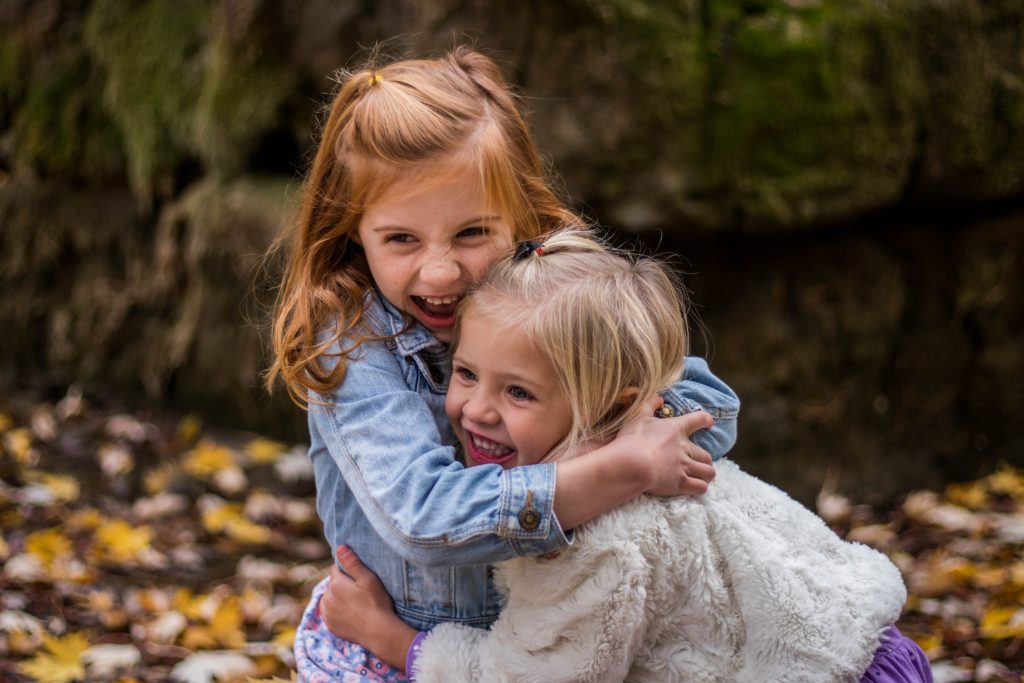
Maintain open communication with all adults involved.
It’s not uncommon, due to our repressive culture, for parents to fear that their child will be treated negatively as a result of exploratory sexual behaviors. This is a justified concern, but keep in mind that silence only makes children more vulnerable to unsafe situations. Occurrences are not only a teachable moment for the children but for caregivers as well. Especially when the setting is a school, talking with all parties involved can help with identifying where more education and support are needed and to develop next step plans that minimize harm or re-occurrence. And in case you’re wondering, calling the police in response to children who engage with other children in exploratory sexual behaviors is not the appropriate reaction. Unless one of the parties involved is a teenager or adult, the situation should be handled first by the caregivers or trusted adults who are responsible for the care of the children. Treating a young child as though they are a sexual predator is not the answer.
If you suspect that sexual abuse is a factor in what is influencing a child’s behavior, follow your gut.
It is true that children who have experienced sexual trauma, especially if it has gone unaddressed, can act out sexual behaviors as a result of their trauma. So if you have any doubts, a couple great organizations to reach out to are RAINN and Stop It Now. They have hotlines available and services that can help caregivers ensure they are taking the appropriate next steps.
Connect to trusted resources for support and learning.
Children need the guidance and support of caring adults to help them understand how to engage with others in safe ways. Know that your role is to give them tools they can apply along their journey. Books, videos and conversations about real situations that arise can all be great ways to integrate education about consent, body safety and safe/unsafe touch. This great podcast episode by Six Minute Sex Ed Podcast can be listened to by children of all ages and covers the topic of body boundaries between kids and Playing Doctor.
One book I highly recommend for caregivers is Body Safety Education: A Parent’s Guide to Protecting Kids from Sexual Abuse by Jayneen Sanders. It offers a wealth of clear and practical guidance to support families. Educate2Empower Publishing also has many great books, posters and resources for parents and educators related to body safety and abuse prevention education for children. If you like interactive learning, Parenting Safe Children has an excellent virtual workshop and course designed to support caregivers on the path to keeping children safer from unsafe touch and sexual abuse.
Also important, especially if you’re a trauma thriver, is your continued healing and education. Parenting can be triggering, so connect yourself with spaces and people you can trust to support your journey.
Always ask yourself this: “How am I preparing them for safe, consensual experiences with others?”
Preparing kids for safe, consensual experiences means redirecting them when they touch each other’s genitals. Redirecting does not promote shame, it supports safety and sexual health. HOW we redirect them is what makes the difference.
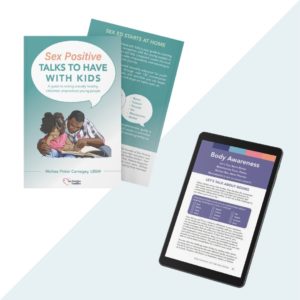 For a guide made just for parents and caregivers to tackle sexual health talks at every age and stage, check out our bestselling book Sex Positive Talks to Have With Kids: A guide to raising sexually healthy, informed, empowered young people.
For a guide made just for parents and caregivers to tackle sexual health talks at every age and stage, check out our bestselling book Sex Positive Talks to Have With Kids: A guide to raising sexually healthy, informed, empowered young people.
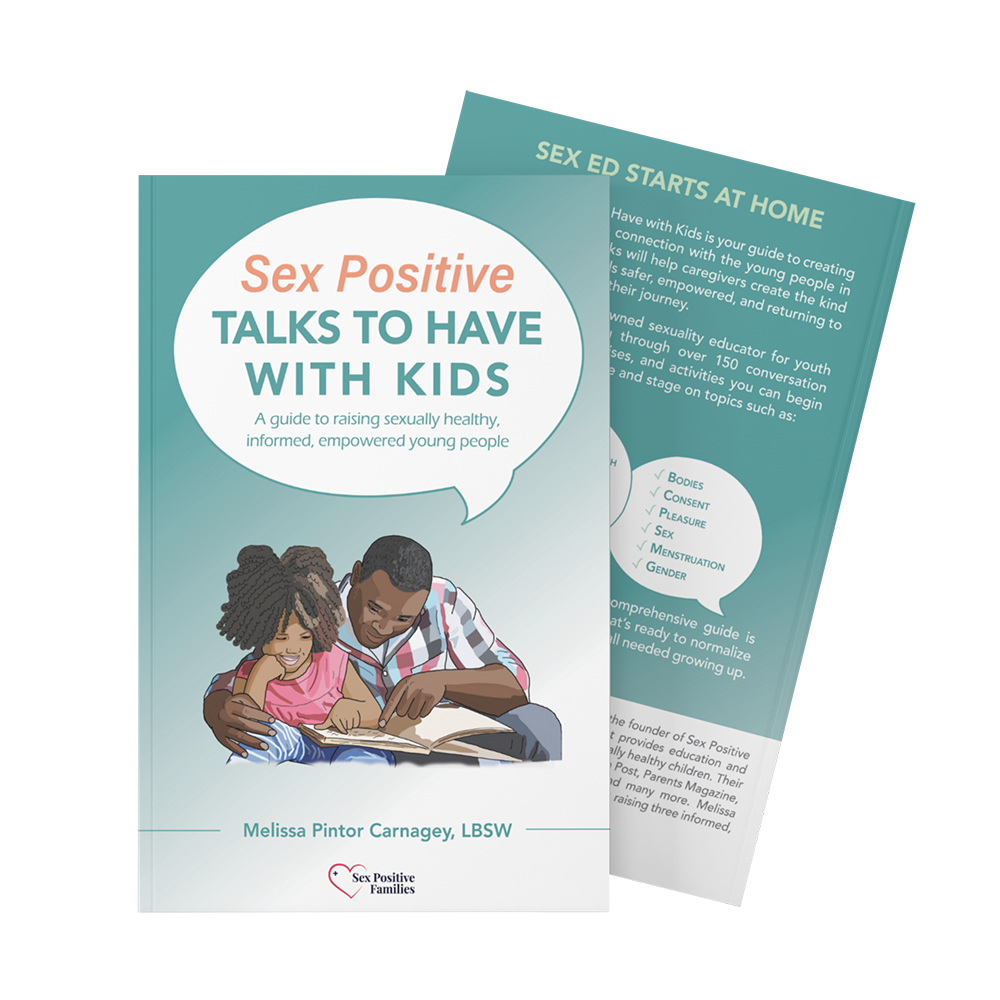
Sex Positive Talks to Have With Kids is the bestselling guide to creating an open, shame-free connection with the young people in your world.
It’s an inclusive, medically accurate, and comprehensive resource that walks you through over 150 conversation starters, reflection exercises, and activities you can begin implementing at every age and stage to normalize sexual health talks and become the trusted adult we all needed growing up.
